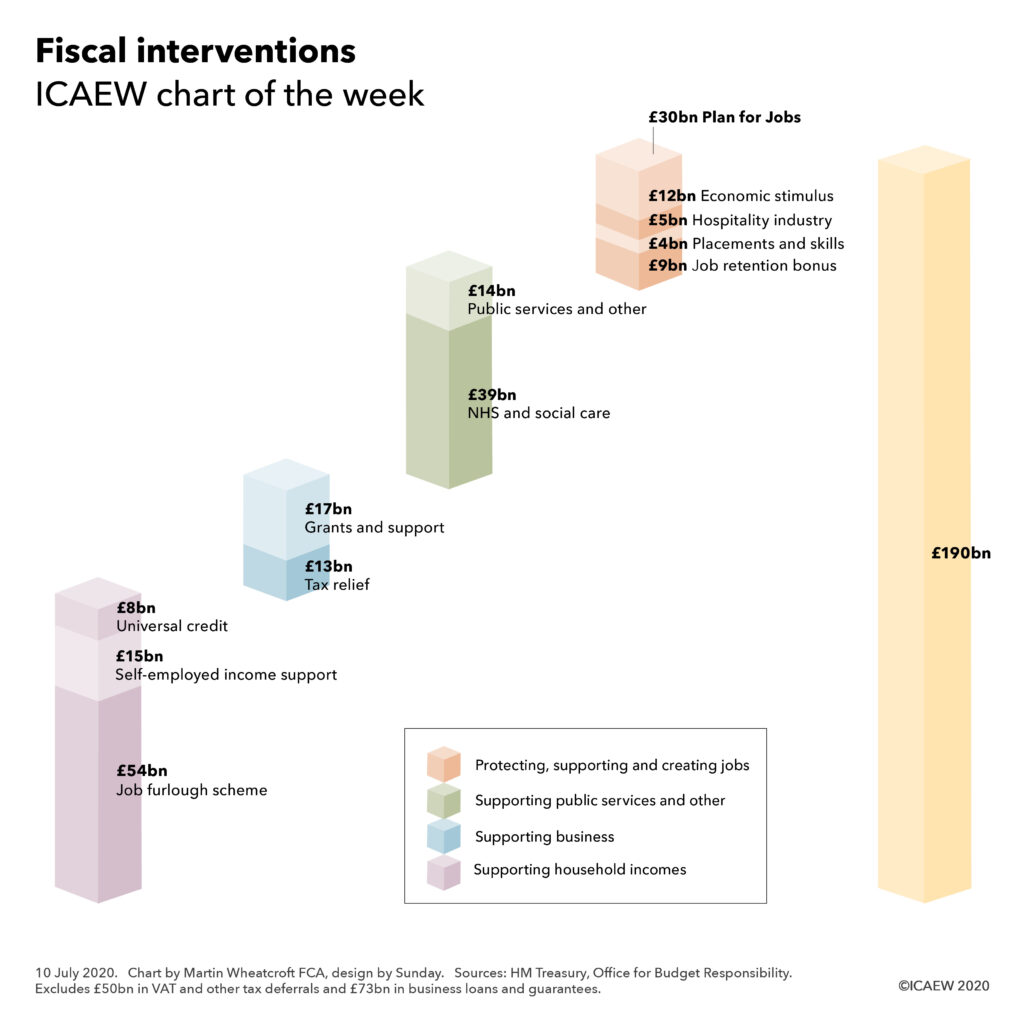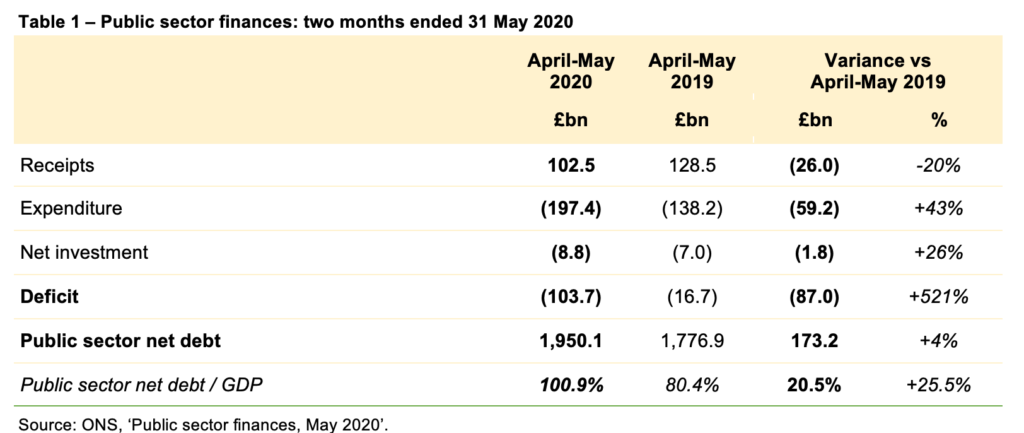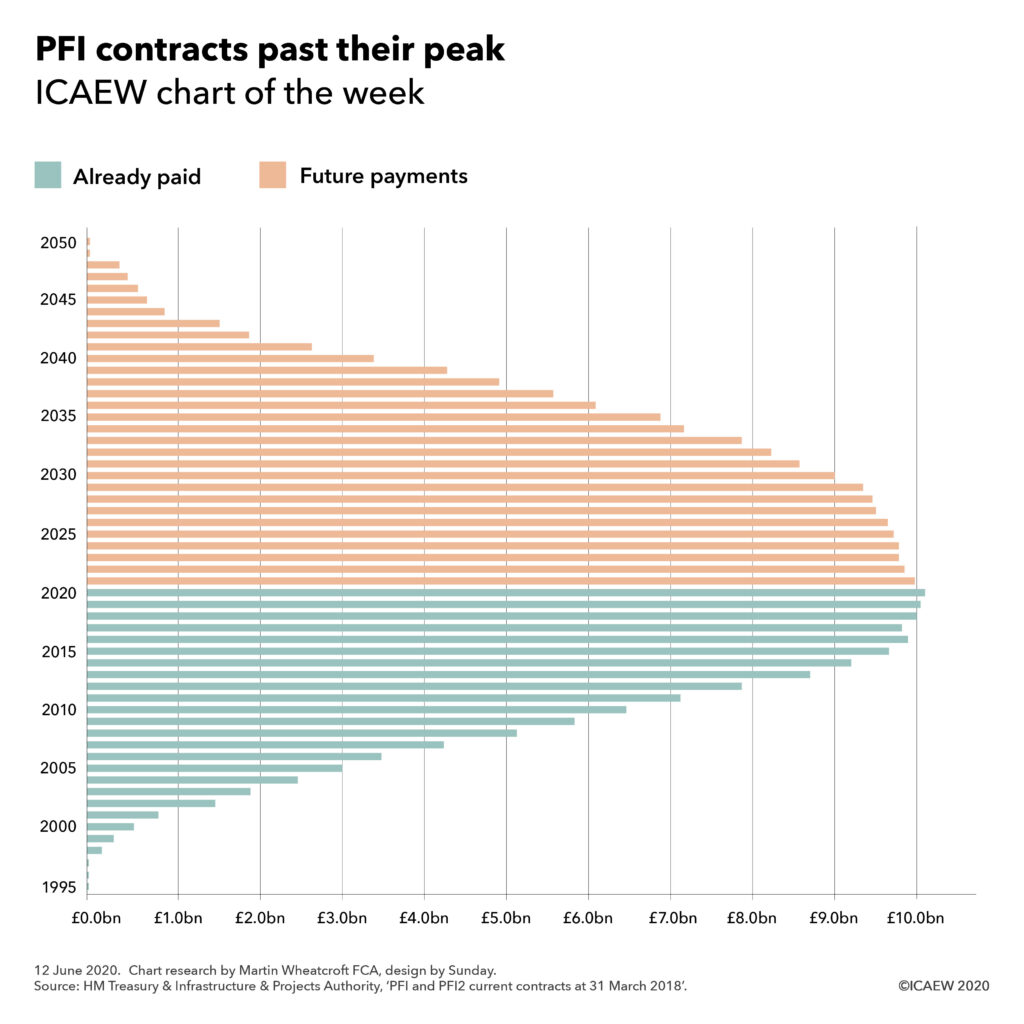20 July 2020: The Office for Budget Responsibility suggests tax rises or spending cuts of more than £60bn a year may be needed if the UK public finances are to be put onto a sustainable path.
The Office for Budget Responsibility (OBR) has reported that the public finances are unsustainable over the next 25 to 50 years, given expected levels of economic growth and pressures on public spending from more people living longer. Fiscal risks have also increased significantly with two ‘once-in-a-lifetime’ economic shocks occurring in just over a decade.
Without action to increase taxes or cut spending over the next few decades, the OBR projects that the gap between receipts and public spending before interest will widen from around 1% of GDP in 2019-20 to between 10% and 15% in 2069-70, depending on how quickly the UK recovers from the coronavirus pandemic. Public sector net debt could increase to between 320% of GDP and 520% of GDP, based on the assumptions made.
The OBR has highlighted how the coronavirus pandemic has not only worsened the immediate prospects for the UK and global economies, but ‘economic scarring’ will permanently damage the expected level of tax receipts over the next 50 years. The vulnerability of the public finances to potential future economic shocks has also increased significantly.
The OBR believes that a V-shaped economy is still possible, but this is now considered to be an upside scenario, with the OBR’s central scenario based on a much slower recovery from the pandemic. The downside scenario takes even longer for the economy to recover.
Economic activity, as measured by GDP, and tax receipts are both expected to be lower in all scenarios than in previous forecasts.
Prospects for the public finances in the current financial year have continued to deteriorate with the OBR now forecasting a fiscal deficit between 15% and 23% of GDP, with a central scenario of £372bn (19% of GDP). This reflects a total of £192bn in fiscal interventions in 2020-21 announced by the Government to date to support the UK economy through the pandemic.
The OBR projects that in its central scenario the gap between receipts and expenditure excluding interest will widen to almost 13% of GDP by 2069-70 if no actions are taken, equivalent to almost £300bn in 2019-20 terms. With much higher levels of debt, and interest rates likely to be higher in the medium to long-term, this could cause the fiscal deficit to increase to over 30% of GDP in 50 years time.
The OBR has calculated that ‘fiscal tightening’ in the order of 2.9% of GDP (£64bn a year) would be required based on a target level for public sector net debt of 75% of GDP. This is subject to a number of fiscal risks, including that no further significant changes are made to the planned profile of spending on health and social care – a key source of policy risk.
Closing this gap could require potentially very significant levels of tax increases or cuts in public spending, especially if difficult decisions, such as on how to fund social care, continue to be deferred.
Martin Wheatcroft FCA, adviser to ICAEW on public finances, commented: “The Office for Budget Responsibility has yet again assessed the public finances and concluded that they are not sustainable, even before taking account of the eye-watering levels of borrowing being added to the national debt as a consequence of the coronavirus pandemic.
Although we should expect tax cuts and spending increases in the immediate future as the Government looks to provide stimulus to the economy, the need to reduce the gap between tax receipts and public spending over the medium- to long-term means that tax rises or further cuts in public spending are likely in the years to come.
Despite this, there are actions that could be taken to improve the outlook for the public finances by developing a long-term fiscal strategy to put the public finances onto a sustainable path.”
Table 1 – OBR projections for the public finances: central scenario
| CENTRAL SCENARIO | 2019-20 % OF GDP | 2020-21 % OF GDP | 2024-25 % OF GDP | 2044-45 % OF GDP | 2069-70 % OF GDP |
| Receipts excluding interest | 36.1 | 36.3 | 36.6 | 36.6 | 36.4 |
| Expenditure excluding interest | (37.2) | (54.4) | (40.3) | (43.9) | (49.1) |
| Primary deficit | (1.1) | (18.1) | (3.7) | (7.3) | (12.7) |
| Net interest | (1.5) | (0.8) | (0.9) | (6.2) | (17.8) |
| Fiscal deficit | (2.6) | (18.9) | (4.6) | (13.5) | (30.5) |
Public sector net debt | (88.5) | (106.6) | (102.1) | (173.7) | (418.4) |
Source: OBR, ‘Fiscal sustainability report July 2020’. 2020-21 amounts adjusted for £50bn (2.5% of GDP) of additional fiscal interventions announced on 8 July 2020. Subsequent periods not adjusted.
Table 2 – OBR projections for the public finances: upside and downside scenarios
| DIFFERENCES FROM CENTRAL SCENARIO | 2020-21 % OF GDP | 2024-25 % OF GDP | 2044-45 % OF GDP | 2069-70 % OF GDP | |
| Upside scenario | |||||
| Primary deficit | 3.6 | 2.1 | 2.2 | 2.3 | |
| Fiscal deficit | 3.6 | 2.2 | 3.8 | 6.5 | |
| Public sector net debt | 9.3 | 14.1 | 45.7 | 98.2 | |
| Downside scenario | |||||
| Primary deficit | (4.3) | (2.2) | (2.3) | (2.4) | |
| Fiscal deficit | (4.3) | (2.2) | (3.9) | (6.9) | |
| Public sector net debt | (9.1) | (14.5) | (47.9) | (103.5) |
Sources: OBR, ‘Fiscal sustainability report July 2020’; ICAEW calculations.
Positive differences = lower deficit or lower debt in percentage points of GDP; (negative) differences = higher deficit or higher debt.



